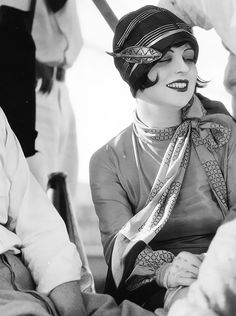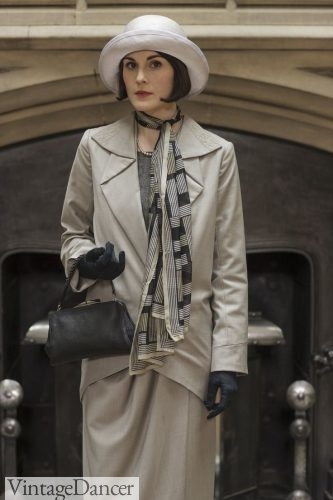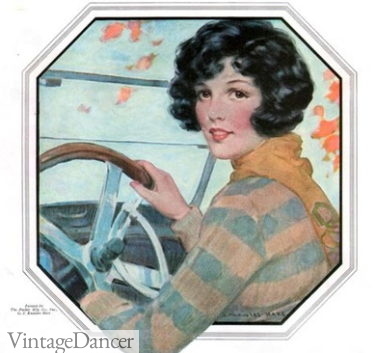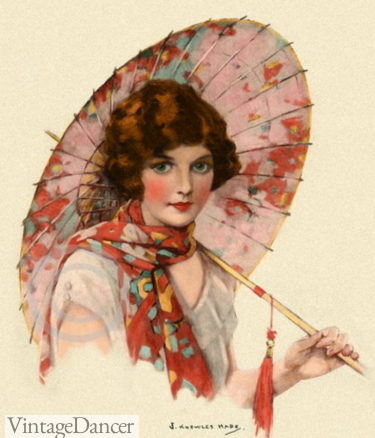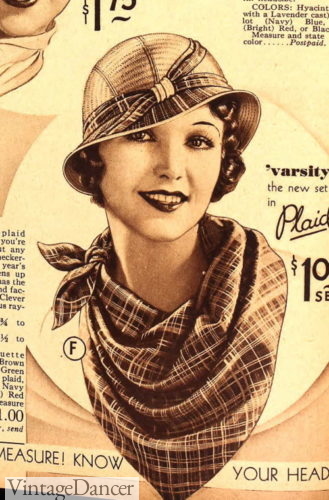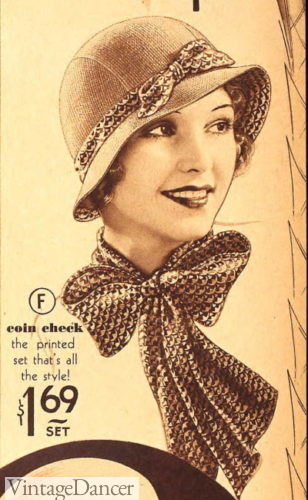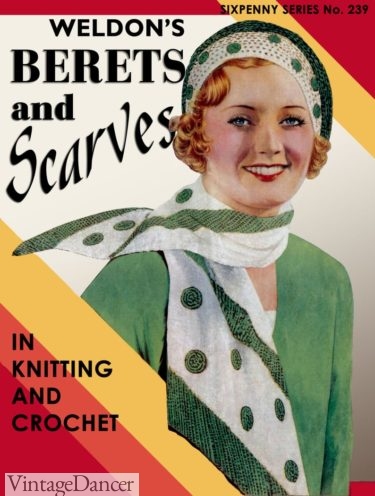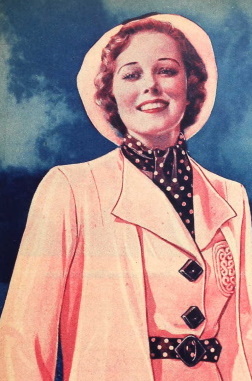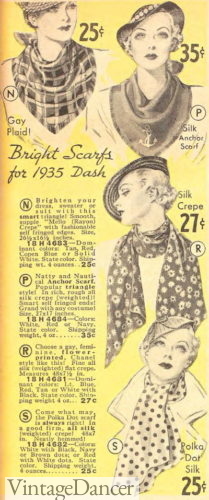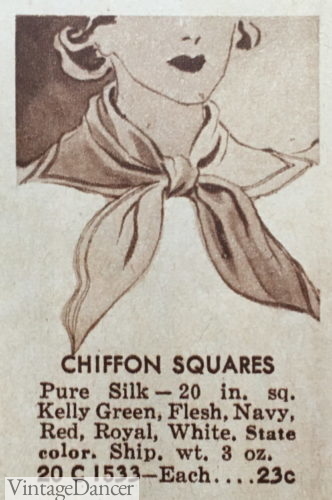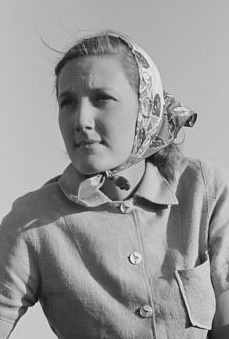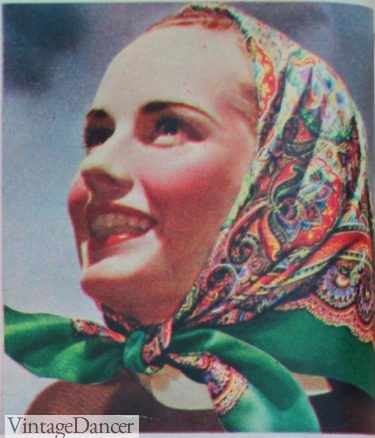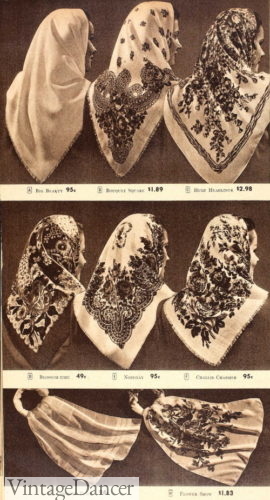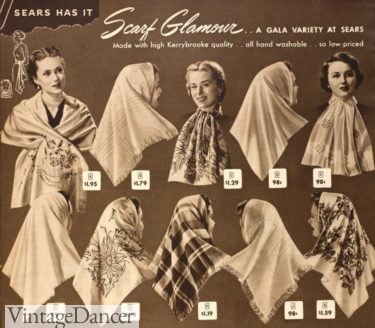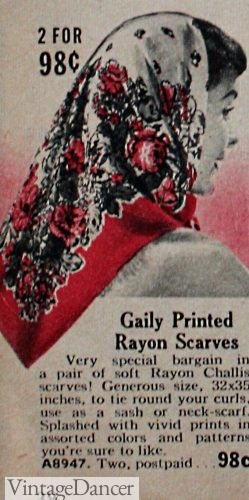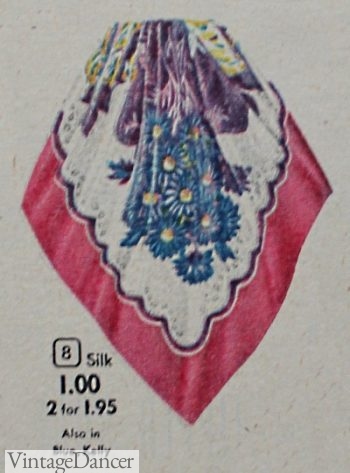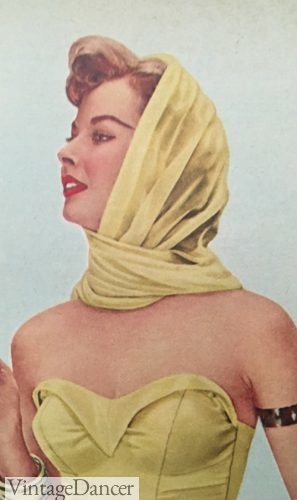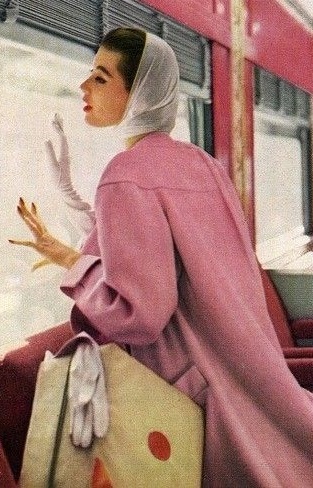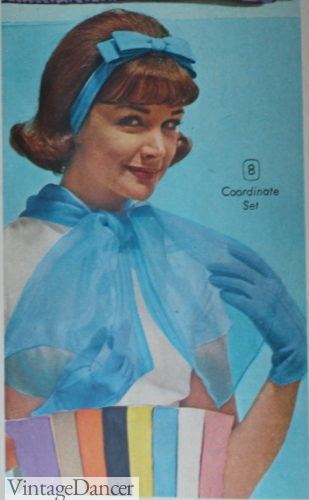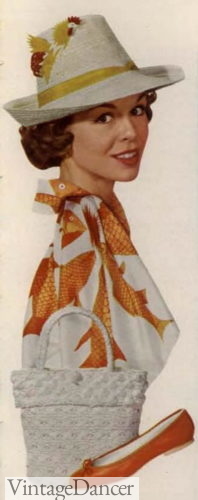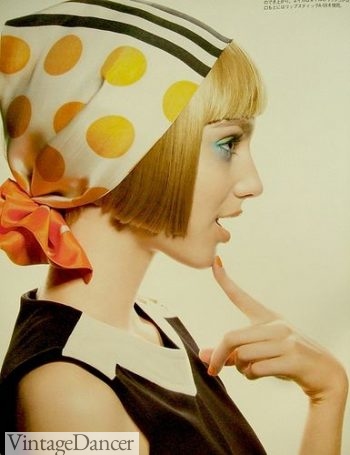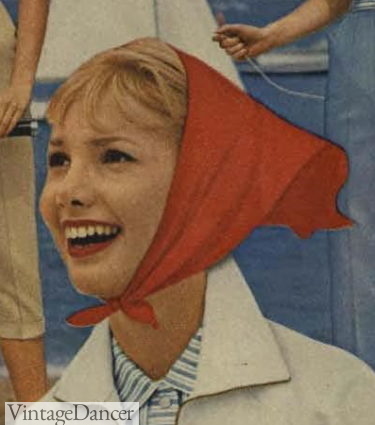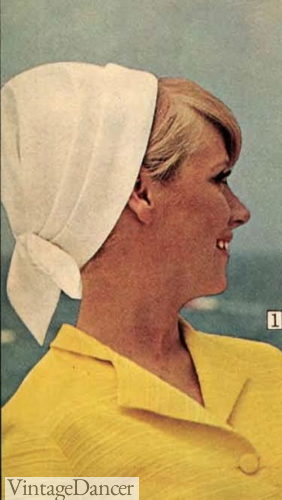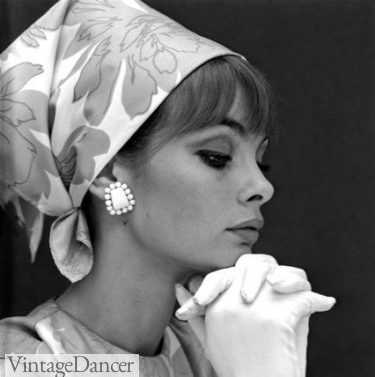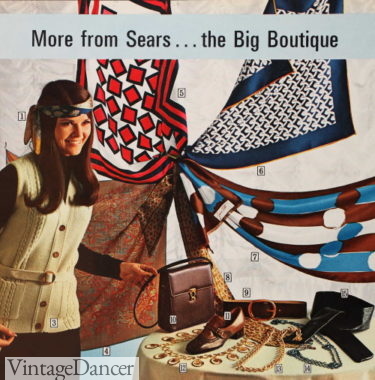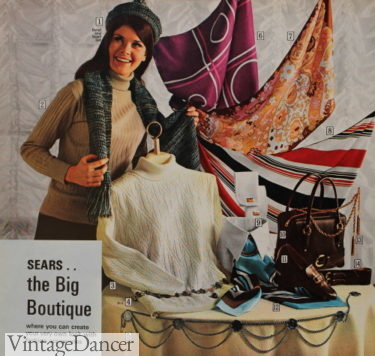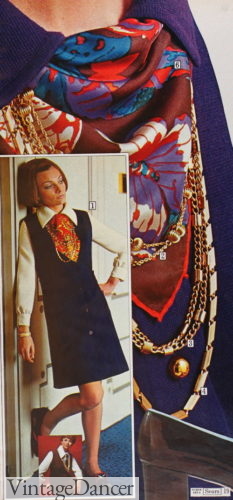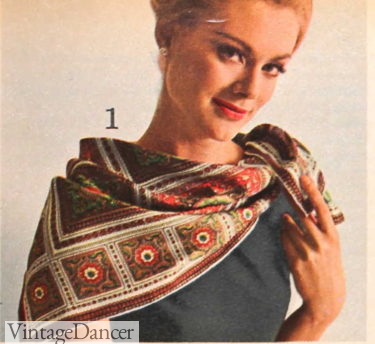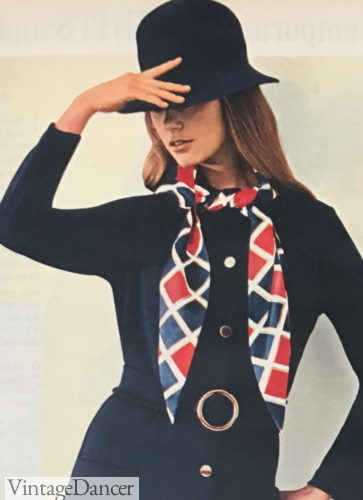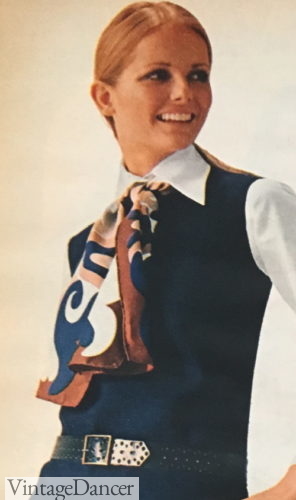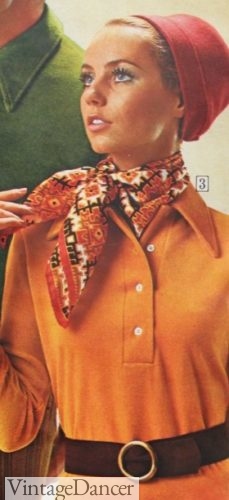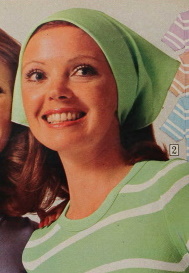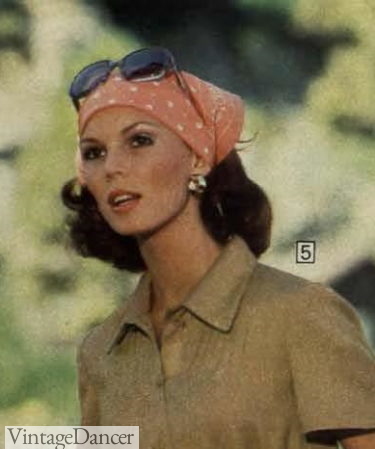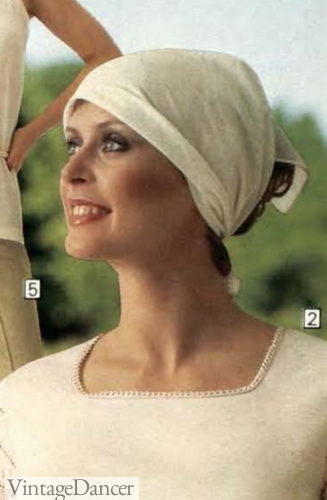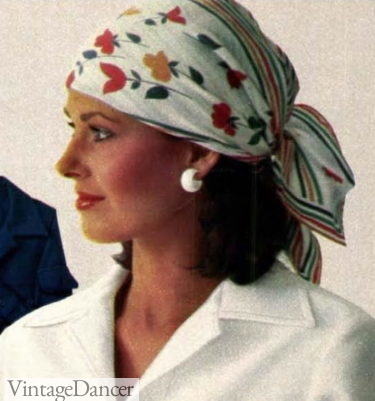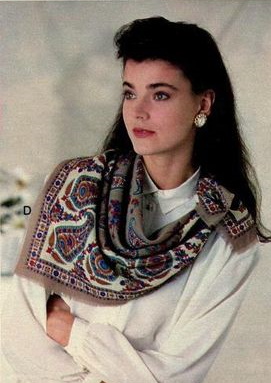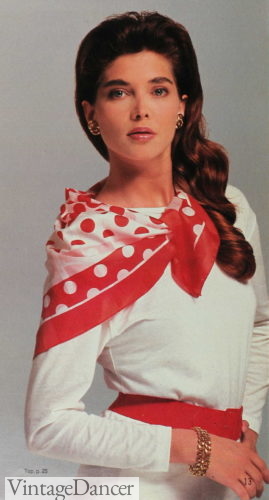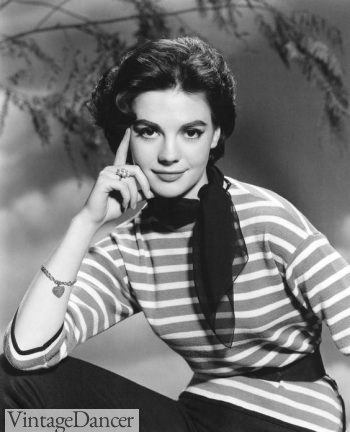
1950s neck scarf
Today we take a look at vintage scarf styles in spring and summer weights and how they were worn through each decade 1920s, 1930s, 1940s, 1950s, 1960s and 1970s. Learn about vintage winter weight scarves and accessories too.
Vintage scarves have been an essential accessory in women’s wardrobes for years. They have the power to add a pop of color to an otherwise plain outfit, tame unruly hairstyles, and even to add a layer of warmth. Scarves really began to soar in popularity in the 20th century. Prior to that, women often wore shawls (essentially larger versions of scarves). These were most popular during the 19th century, and dipped in and out of favor according to changes in popular silhouette.
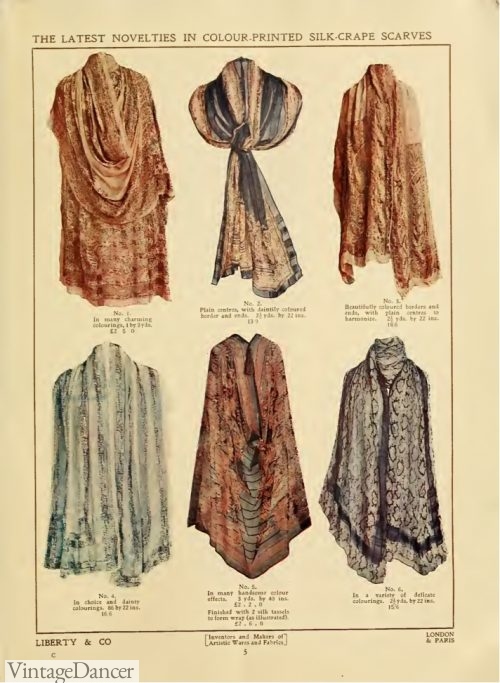
Large scarfs and shawls from 1911.
1920s Scarf Styles
The scarves of the 1920s were either slim, skinny styles tied about the neck or hair, or the larger shawl variety. The slim styles complimented the fashions of the era, drawing the eye downwards towards the dropped waistline.
- Clara Bow wears a skinny scarf
- Mary Crawley in Downton Abbey wears a skinnny scarf knotted to the side of her neck
An otherwise plain dress could be decorated through the use of a scarf tied around the neck, head, or draped from the dress. Long beaded necklaces of the decade also served the same purpose – to draw the eye downwards, creating the illusion of a streamlined shape. Look here for ideas on using scarves to dress up a simple 1920s look.
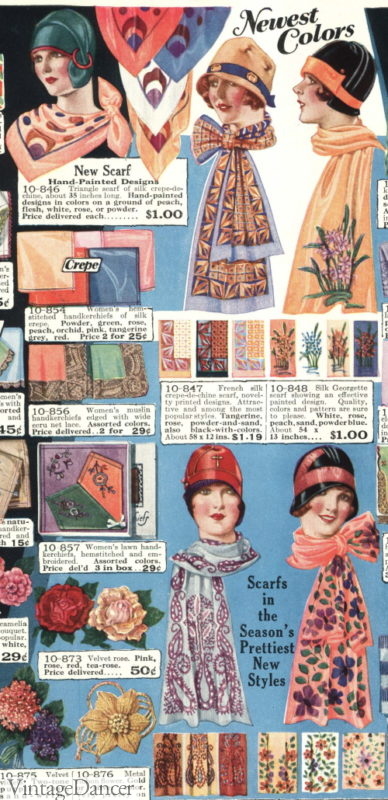
1928 scarves for spring
Although the long, slim length of scarf was popular; it was not without its dangers. In 1927, Isadora Duncan met a horrifying end when her fashionable long scarf became entangled in the wheel of a motorcar she was riding in. She died instantly.
- 1924 light scarf and knit sweaters
- 1920 floral scarf and parasol
Shawls were popular during this decade partly due to the fascination with distant lands — Egypt in particular. This was the decade when Tutankhamen’s tomb was discovered, thereby unleashing an appetite for all things symbolic, mysterious, and exotic. Fringe lined Kimonos and beaded shawls became a fashionable way to express individuality and eccentricity.
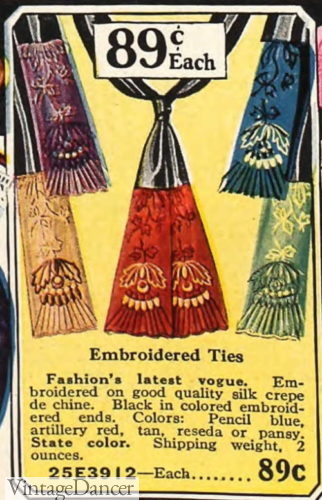
1926 fringe trimmed neck or dress scarves
Scarves were also used to tie back hair. They could cover the hair completely or partially to act as a thin headband. Read more under 1920s headbands and hair pieces.
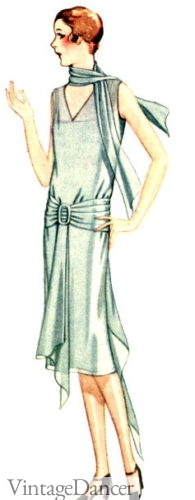
1928 dress with matching sheer scarf
Read more tips on wearing 1920s shawls and wraps and how to accessorize a 1920s dress.
Shop 1920s scarves, shawls, and wraps or hair accessories.
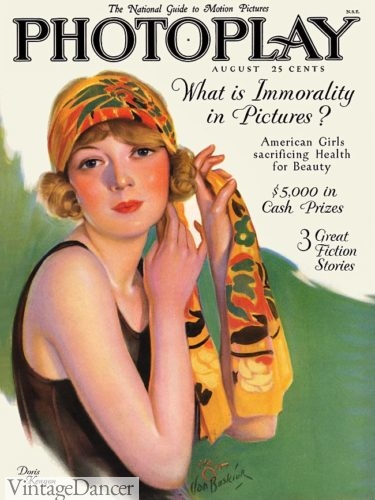
1923 head wrap or scarf
1930s Scarf Styles
During the 1930s, scarves could be worn in a number of ways. They were often worn loosely draped around the neck or shoulders to accessorize an outfit. Scarves could be fastened either with a simple knot, or through the use of scarf clips or buckles.
Silk, or art silk scarves of the 1930s, were often square in shape, rather than of the long rectangular style popular through the 1920s. Knitted and crocheted scarves were popular, with designs of leaves, triangles and petals all included.
- 1933 plaid scarf tied to one side
- 1933 dotted silk scarf tied in a bow at the neck
To add a touch of 1930s style to an outfit, wear a scarf across the shoulders, fastened with a vintage belt buckle, or simply tied in a knot.
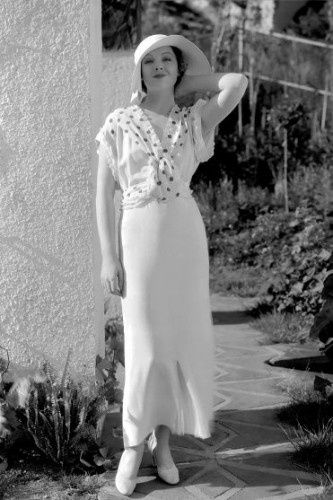
Myrna Loy wearing a polka dot scarf in 1933.
Geometric shapes and motifs featured on scarves, echoing the popular lines and styles of the decade. Polka dots were especially popular prints.
- 1930s green and white dot spring scarf
- 1936 brown and white polka dot scarf with peach suit
Generally, scarves of the 1930s were smaller than those of previous years. The simple small chiffon neck tied scar was starting to trend in the late 1930s only to return again in their full power in the 1950s.
- 1935 various scarves
- 1938 small chiffon neck scarf
To keep off the spring air chill, a small silk scarf could be tied around the head like a kerchief. These were worn in all seasons in light materials and paisley prints.
- 1939 paisley head scarf
- Head wrap / kerchief
1940s Scarf Styles
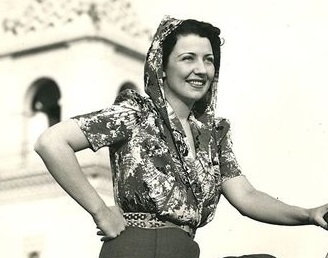
1943, scarf draped around the head
During the 1940s, scarves soared in popularity due to their endless versatility. As with the 1920s and 1930s, textile designers saw a wonderful opportunity in the canvas of the humble scarf. Artists could feature their work on scarves, thereby making their work accessible to a wide range of consumers.
During 1940 up to 1945, English textile company Jacqmar produced scarves with propaganda designs and motifs. The scarves featured slogans such as ‘Salvage Your Rubber,’ and ‘Into Battle.’ The company also utilized motifs inspired by the Armed Forces. The Army, Navy, and Air Force all featured in Jacqmar designs. These scarves were known as propaganda scarves, and were made to help keep up the morale of civilians.
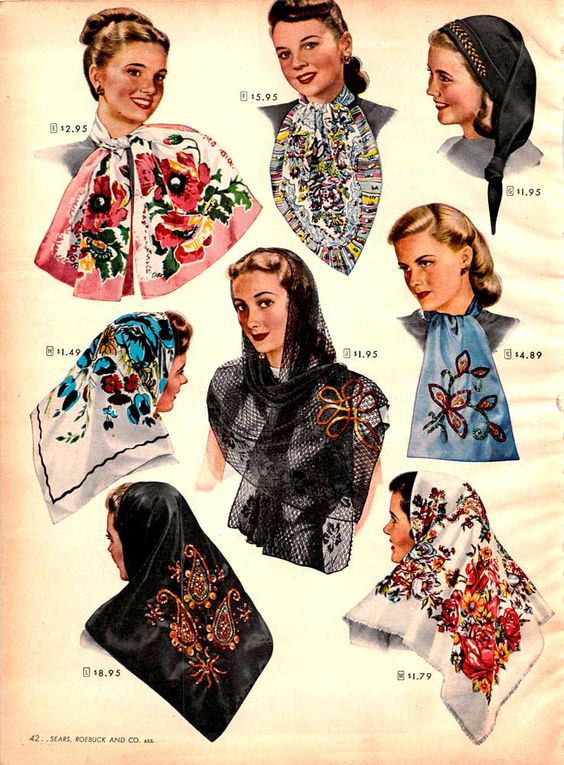
Colorful big prints on 1940s neck and head scarves.
In addition to propaganda scarves, novelty print scarves featuring bold patterns, plaid, florals, and primary colors were also popular. Women would wear the scarves tied about their neck, over their head, or to cover their hair in a turban wrap.

1941 square head scarves
- 1945
- 1949
As some women were now working in new roles and positions, their hair had to be kept in check and out of the way. It became fashionable to tie a scarf around the head in a turban to keep the hair off the face. Watch this video by Royal Vintage for tips and technique on tying a vintage 1940s style turban.
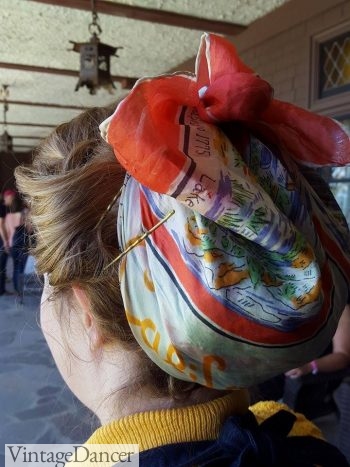
A scarf tied and worn in the hair as a turban. To keep slippery silk from sliding away use bobby pins around neck the base and crown.
Wearing a scarf as a turban is not only a great way of keeping hair out of the way but also a fabulous way of accessorizing! A turban scarf could also handily hide a pin-curl hair set too. Shop 40s hair scarves.
1950s Scarf Styles
During the 1950s, the popularity of the scarf had not waned. Women were still wearing scarves around their necks and in their hair as an accessory. Perhaps the most popular style of scarf during this decade was the chiffon neck scarf.
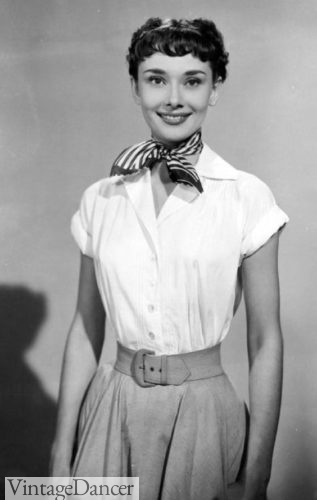
Audrey Hepburn in
Roman Holiday neck tied small scarf
Usually made of nylon chiffon, this scarf was square in shape and normally around 20 inches in size. The scarf could be folded in half to form a triangle, then either tied around the neck or rolled up to form a strip and tied around the head as a headband.
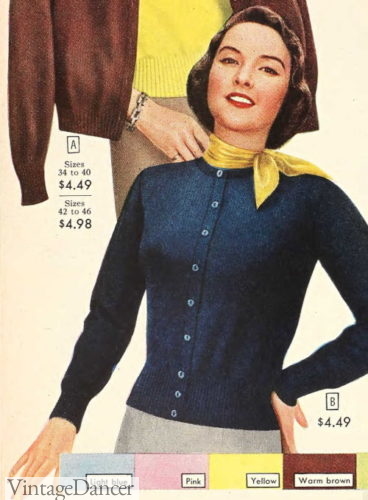
A chiffon scarf was the perfect pairing with twin sweater sets and cardigan clips! Every young woman had a handful in her vanity to match other accessories but stripes, polka dots, and small prints cheerfully added personality to a plain outfit.
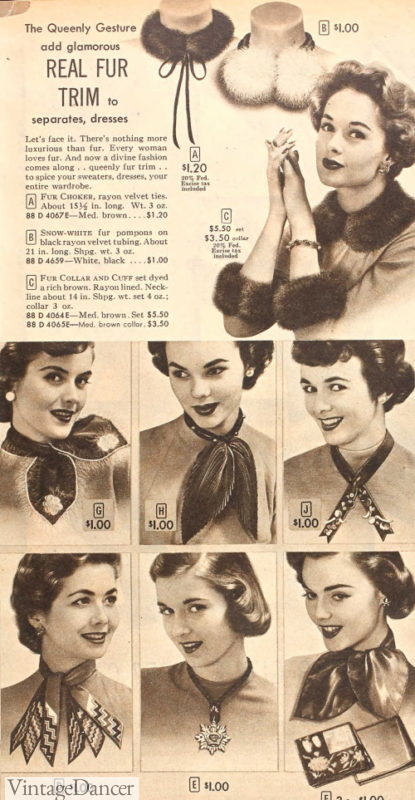
1952 small neck scarves of silk, chiffon, wool and fur
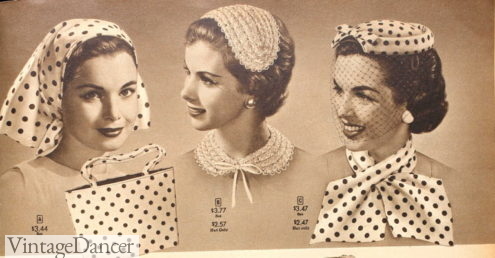
1957 head scarf and neck scarf (ascot) in polka dots
Another way to fold a neck scarf in the 1950s was with a short rectangle scarf wrapped around the neck and folded under and over the knot. These looked stunning over a sleek pencil dress, or skirt and snug fitting top.
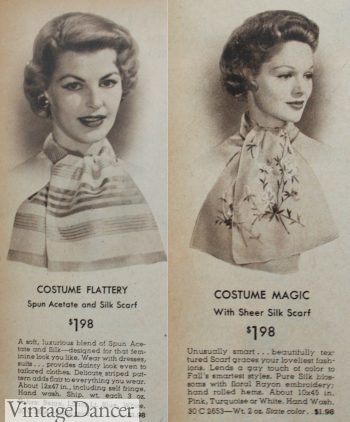
1950s rectangle scarf tied and folded over
Back up on the head, a babushka scarf was a new name for the kerchief. It was wide 30-inch square made of silk, rayon or light cotton. It wrapped around the head and tied under the chin. It was remarkably warm, even in light silk.
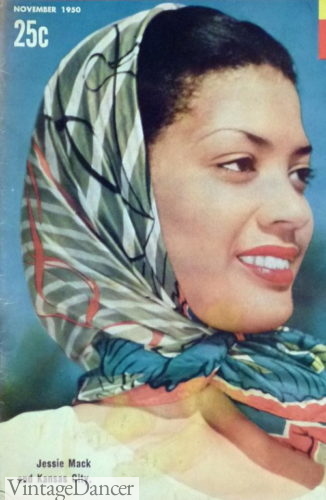
1950 headscarf of a tropical print
Cheap to make and buy, they became tourist souvenirs along with matching handkerchiefs. The had illustrations of the city, a map, or a collection of foreign words. Back at home, florals, border prints, polka dots, and solids (especially white) were worn.
- 1958, rayon Babushka or kerchief
- Pretty silk border scarf
A white chiffon scarf wrapped around the back of the head and cross tied and tucked back under was a very elegant way to wear a white or pastel scarf. It was too sophisticated for most women, but city dwellers in the upper classes wore them while driving, traveling, beachgoing, or otherwise engaging in activities that could mess with a fresh hairdo. They also did a nice job of covering up a bad hair day in a very chic way.
- Yellow chiffon scarf while at the beach
- Light chiffon hair scarf
Stoles or shawls were worn from day to night in warm knits, textured wools, luxurious velvets, and sheer silks. Some had large pockets stitched into the ends to keep hands warm on the go. Others were turned into caps with a pretty brooch clasp at the neck. Whatever the end result scarves, stoles, shawls or capes were a required accessory in the 1950s.
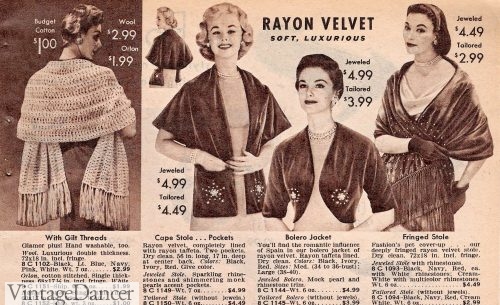
1957 knit and velvet shawls
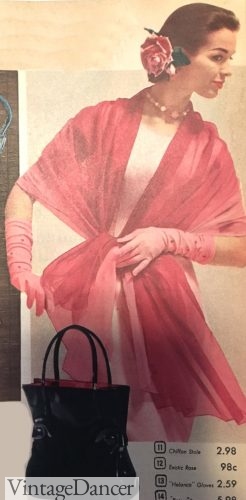
1955 sheer evening shawl
1960s Scarf Styles
Scarves remained popular during the 1960s until towards the end of the decade, when the counter-culture of youth began to ripple its effects through fashion.
During this decade, scarves were worn to coordinate with an outfit or an ensemble. Women wore suits of a skirt and matching jacket, and finished the look with coordinating gloves, handbag, hat and scarf.
- 1964 chiffon scarf and headband set
- 1960 goldfish print scarf with matching accessories
Scarves of this decade were frequently tied over the head to form a knot at the chin, just like in the 1940s, but were shorter in length. This protected the hair from the elements and added a touch of classy style while doing so. Prints could be bold or funny novelties. Solid color cotton, lace and shiny vinyl were also prevalent.
- Pop art headscarf. Love it!
- 1961 red cotton headscarf
- 1968 white pleated headscarf
- Jean Rosemary Shrimpton 1960
As the neck scarf slowly began to wane in popularity over the next few years, it again changed in form.
The neck scarf draped over shoulders, tied around neck likes a bib, and rolled to make a fore-headband all came back in the late 1960s and early 1970s. Prints were medallions, Mod daisies, geometrics, and paisley.
- 1969 headband and draped scarves
- 1969 bold print scarves
- 1969 bib scarf
- 1963 medallion scarf
1970s Scarves
Skinny scarves were popular again during the late 1960s and early 1970s, with textile designers Biba and Celia Birtwell producing fabulous prints and designs. They could be very long or down to mid chest.
Prints were bold, mod, pop art, and abstracts. They could be tied in a number of ways from simple loose knot to a necktie style around blouse collars.
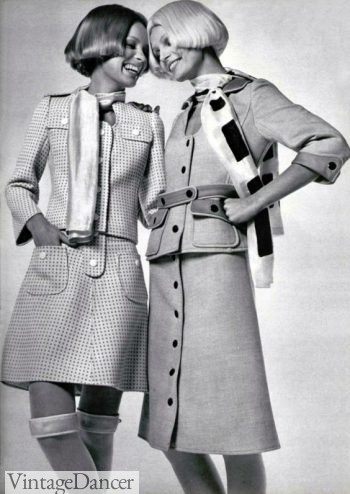
Late 1960s skinny scarves return to fashion
- 1970
- 1970
- 1970
- 1970
In the mid to late 1970s the headscarf came back. Short 60s style or longer scarves tied at the back of the head. The scarf was also turned into a turban for both day and evening looks.
- 1975 lime green cotton scarf
- 1976 polka dot scarf
- 1977 turban scarf
- 1978 floral and stripe head scarf
1980s Scarves
The spring scarf had limited appeal in the 1980s. The one exception was around 1988 when the sophisticated look was in (inspired by the 1950s.) Large Victorian brocade shawls had a regal looked when draped around the shoulders. Nautical colors and patterns were also trendy in summer. Rich leopard prints and jewel tones were found in winter.
Despite the 1980s being the era of layering and over the top accessorizing they rarely include the scarf.
Due to their versatility, scarves will never completely drop out of favor. Scarves are still an easy way to update an outfit, or, as we have seen, to create a vintage inspired style.
Shop –> new Vintage Style Scarves here
Shop –> Real Vintage Scarves here
Debbie Sessions has been teaching fashion history and helping people dress for vintage themed events since 2009. She has turned a hobby into VintageDancer.com with hundreds of well researched articles and hand picked links to vintage inspired clothing online. She aims to make dressing accurately (or not) an affordable option for all. Oh, and she dances too.
